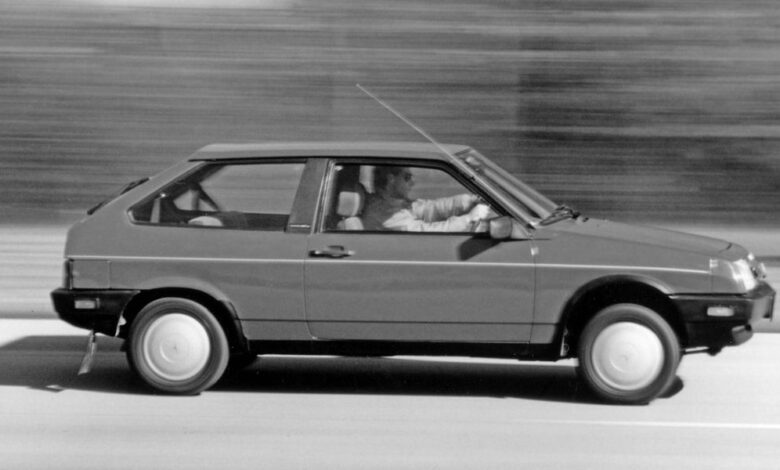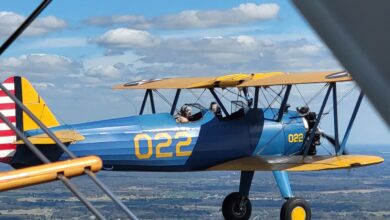From the Archive: 1989 Lada Samara

From the June 1989 issue of Car and Driver.
Not another lowball-car test? Give us a break! Haven’t we already had enough Yugos, Hyundais, Daewoos, Protons, Chaikas, Hong Qis, etc., etc. to open the First Botswana International Auto Show without loading down these pages with more self-propelled junk from the Third World and other backwaters of civilization? Show some mercy!
But wait a minute. This is a Russian car, this Lada Samara, better known to hundreds of lower-echelon Communist Party functionaries and assistant powerplant managers as the VAZ. As any warmhearted visionary for world peace or any steely cold-war paranoid will agree, the Soviet Union is not a Third World nation but a superpower of the first magnitude.
They are, of course, both wrong. Noted columnist George Will got it right when he described the Soviet Union as a Third World nation with a First World army. We must therefore defer to your objections and admit that the automobile at hand is as much a product of the Third World as any bogus Cartier tank watch you might find in the Algerian Casbah.
We bring you this preview test purely as a public service, because no Lada Samaras currently grace the highways of America. The closest importation point is Canada, and thanks to the vigilance of our trusty Customs Service we had to visit our neighbors to the north in order to make the following evaluations. (We made an initial attempt to penetrate the U.S. border with the car, but our men in green—ever suspicious of alien automobiles, alien drugs, and just plain aliens—turned the little beauty away when they discovered that the proper DOT and EPA credentials were missing from its door frames.) So rest easy, you unreconstructed redbaiters, Idaho survivalists, posse comitatus loyalists, and members of the Young Americans for Freedom: These shores are unsullied by this latest communist menace. And, considering the limited appeal of the product, they ought to remain so.
By way of introduction, the Lada Samara is a conventionally conceived, front-drive, front-engined, three- or five-door economy car powered by a transversely mounted, 1300 or 1500cc, belt-driven overhead-cam engine connected to a five-speed manual transmission. Lada hired Porsche to engineer much of the basic drivetrain, and a visual examination of the engine compartment reveals a placement of accessory drives, distributor, and certain other bits that is vaguely reminiscent of the 944’s arrangement. Of course, Porsche is not exactly trumpeting this contribution from the highest rooftops. In fact, Zuffenhausen’s Canadian reps have made it eminently clear to the Lada importers that if such a relationship is even suggested publicly, a squadron of Stukas will darken the dawn skies over Lada Canada’s Rexdale, Ontario, headquarters.
While the Samara is not truly ugly, one could hardly be expected to become weak-kneed by aesthetics based on design themes from such Japanese triumphs as the Toyota Tercel, the Datsun F-10, and the Subaru GL. By way of improvement, the Canadian importers scrap the original-equipment Russian 165-series tires during the port-of-entry conversion in Halifax, Nova Scotia, and fit North American Goodyear Arriva 175/70R-13s that not only enhance handling but reduce the ugliness quotient.
Still, the Lada perches on its suspension (struts in front, a solid axle in the rear, and coil springs all around) much like the Citroën 2CVs of yore. It’s a sight from which decent men turn their eyes.
It does not take Sergio Pininfarina to understand that the Soviets have a thing or two to learn about fit and finish. Though the paintwork is reasonable, the body welds, the panel alignment, and the interior fitments are best described as “early Hyundai.” The interior is an inelegant expanse of industrial-strength plastic. The seat coverings are made from a thick-weave fabric that calls to mind a mechanic’s shop cloth. Exposed screw heads, ill-fitting fascia strips, and sharp-edged panels—especially the corner of the radio console, which jabs at the driver’s shin bone—are evidence that the engineers at the immense Volzhsky Automobilny Zavod works in Togliattigrad need to refine the production process somewhat beyond the levels employed in the repair of Mother Russia’s communal-farm implements.
(Historical note: The Togliattigrad factory in the former city of Stavropol, about 600 miles south of Moscow, was built in conjunction with Fiat SpA in 1969 and named after the powerful Italian Communist Party leader, Palmiro Togliatti. The factory first produced a Russian version of the Fiat 124 and now pumps out about 750,000 Samaras annually. In addition, the Togliatti works builds a zany little four-wheel-drive off-roader called the Niva and a 124-based wagon dubbed the Signet.)
The Samara’s instrument panel sports a vacuum fuel-economy gauge, as well as the standard fuel, water-temperature, and voltage gauges. Conspicuous by its absence is a tachometer. The radio is a “Russian” Sparkomatic that, in the spirit of Gorbachev’s glasnost, does not automatically jam heavy-metal rock music. One neat gadget is a cable-operated headlight adjuster that permits the driver to fine-tune high- and low-beam settings to account for weight shifts and changing weather conditions.
Driving the Samara offers a whole new set of surprises. The 74-hp 1.5-liter engine, despite its Porsche heritage and considerably oversquare design, emits noises that would shame a John Deere dealer. One would therefore expect the Lada’s performance to be equally agricultural, but this little aparatchik gets down the road with notable ease. We recorded a 0-to-60-mph time of 13.8 seconds, reasonable 50-to-70-mph passing performance, and hill-climbing ability that didn’t require inordinate amounts of gear paddling. Overall, the little Porsche—oops, Lada—four-banger offered healthy if somewhat uncivilized amounts of power and torque for its modest size.
The Samara’s handling, on the other hand, could revive the cold war. We visually confirmed that the Samara was equipped with shock absorbers, although it is unknown whether they actually contained any fluids, gases, cotton wadding, or shredded newspapers. Needless to say, the shocks were shockingly nonabsorbent. Even a spasm of ESP could send a seismic judder rattling through the bodywork, and excursions down a country lane produced visions of the entire unit-body collapsing.
Veteran drivers will recall that torque steer was the bugaboo of front-drive automobiles in the era of 810 Cords, Citroën Light Sixes, and early Toronados. That nasty trait has been excised from most modern cars, but the Lada retains a sufficient amount to remind one of a first ride in a tweaked-up Mini Cooper S. Severe applications of throttle while exiting slow corners prompted an immediate course change to starboard—whether that was the intended direction or not. Worse, a lusty charge into a tight bend would produce the odd sensation that the inside rear wheel was suspended several inches—or feet—above terra firma.
The Lada’s ergonomics are quite good (a Porsche contribution?), aided by a properly located steering wheel and well-positioned pedals. The downside is a rudimentary seat with little or no lumbar support and all the lateral-holding qualities of a park bench. Another enormous negative: a vague gear-shift linkage that also lacks a reverse-gear lockout. Look out behind!
One thing must be remembered when discussing Third World automobiles: price—or the lack of it. These cars are by definition cheap. The Samara, for example, costs only $6246 in U.S. dollars—with but a few hundred dollars’ worth of extras available. That would make it one of the least expensive choices on the market, if one were willing to forgive its drawbacks in the name of international goodwill (which, quite frankly, is the only conceivable reason why one wouldn’t choose one of the only slightly more expensive Japanese brands).
The Russians sold about 15,000 Ladas in Canada during the late 1970s and early 1980s. The newest importer, Ted Weitler, is a wealthy international bulk-oil dealer who has done extensive business with the Russians. His operation hopes to sell about 2500 units a year. And if you don’t think the Soviets are interested in trade with the West, consider that the same Samara costs the equivalent of about $15,000 in the U.S.S.R. That princely figure includes a five-year waiting list. Talk about dumping!
As you read this, a number of Americans are discussing importation, including Oregon megadealer and NADA president Ron Tonkin. He thinks the Lada could become a minor presence in this market. But that hope overlooks the fact that the Lada, being Russian, is at least two full design cycles behind the best of the East and West. Until serious refinement is injected into the product, we recommend you postpone your appointment in Samara.
Specifications
Specifications
1989 Lada Samara 1500
Vehicle Type: front-engine, front-wheel-drive, 2+3-passenger, 2-door hatchback
PRICE
Base/As Tested: $6609/$7148
Options: sound system, $272; front air dam, $155; wheel covers, $71; floor mats, $41
ENGINE
SOHC inline-4, iron block and aluminum head
Displacement: 92 in3, 1500 cm3
Power: 74 hp @ 5600 rpm
Torque: 80 lb-ft @ 3500 rpm
TRANSMISSION
5-speed manual
CHASSIS
Suspension, F/R: struts/trailing arms
Brakes, F/R: 9.4-in disc/7.9-in drum
Tires: Goodyear Arriva M+S
P175/70R-13
DIMENSIONS
Wheelbase: 96.9 in
Length: 157.7 in
Width: 68.9 in
Height: 52.6 in
Passenger Volume, F/R: 41/31 ft3
Cargo Volume: 10 ft3
Curb Weight: 2129 lb
C/D TEST RESULTS
30 mph: 3.9 sec
60 mph: 13.8 sec
1/4-Mile: 19.4 sec @ 68 mph
Top Gear, 30–50 mph: 14.1 sec
Top Gear, 50–70 mph: 21.2 sec
Top Speed: 89 mph
Braking, 70–0 mph: 231 ft
Roadholding, 300-ft Skidpad: 0.71 g
C/D FUEL ECONOMY
Observed: 29 mpg
EPA FUEL ECONOMY
City/Highway: 30/37 mpg



